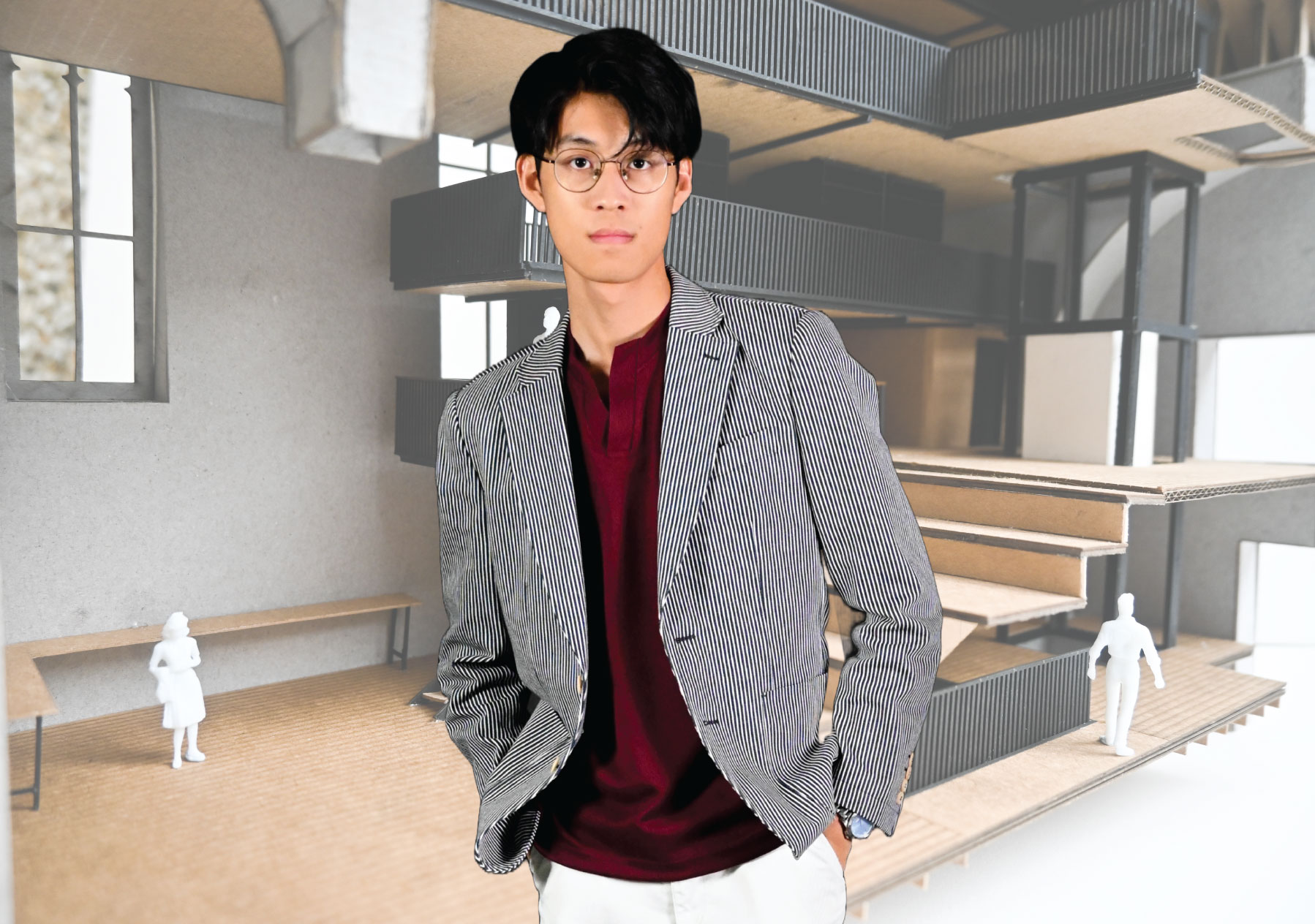After graduating, Michael was deeply honoured to receive the Hong Kong Young Design Talent Awards 2025 for his undergraduate design projects, especially his final year project, “Allegorical Space – Sculpting in Time.” Inspired by the question of how architecture can challenge conventional perceptions of space and time, Michael explored the interplay between moving images and built environments. His project reimagined an abandoned Tong Lau building in Hong Kong through the narrative lens of the film “Stalker,” creating a unique spatial journey.
Throughout his studies, Michael faced challenges like peer pressure and self-doubt, but supportive mentors and peers helped him grow. He learned the importance of communication, both in presenting ideas and interpreting user needs, skills he continues to develop in his design career.

Mr. CHAN Michael Kai Lok
School of Design
Michael’s project explored how architectural space can challenge normative notions of time and space by “sculpting in time.” He recognized that time and sequence are subjective, with each individual experiencing them differently. This knowledge is crucial for designers, as it encourages the creation of spaces that evoke unique, personal experiences and challenge conventional linear narratives in architecture.
Michael employed allegorical architecture to investigate the interaction between moving images and built environments. By overlaying film narratives onto real sites, he demonstrated how allegory can be used to infuse spaces with deeper meaning and layered storytelling. This approach enriches the user’s experience and opens up new possibilities for conceptual and narrative-driven design.
By situating his project in an abandoned Tong Lau building and the surrounding alleys of Hong Kong, Michael highlighted the importance of site-specific design. He used the unique context of the site to inform his design decisions, blending the physical environment with cinematic narratives. This knowledge emphasizes the value of understanding and responding to the history, culture, and atmosphere of a place in the design process.
Michael’s design juxtaposed fragments of different spaces and temporalities, creating alternative interpretations of narrative and space. This technique of fragmentation and recombination is a powerful design strategy, allowing for the creation of complex, multi-layered environments that invite exploration and reinterpretation by users.
Michael learned the importance of self-reflection, especially when facing peer pressure and self-doubt during his final year. By recognizing that constant comparison with others was unproductive, he developed greater self-awareness and focused on his own unique learning path. This skill is essential for lifelong learning, as it helps individuals understand their strengths, weaknesses, and personal growth areas.
Michael emphasized that effective communication is fundamental for designers, from interpreting user needs to presenting innovative ideas. He practiced articulating his concepts clearly during critiques and professional interactions. Strong communication skills are vital for lifelong learning, enabling individuals to share knowledge, collaborate, and adapt to diverse audiences and environments.
Through his project, Michael explored complex questions about space, time, and narrative in architecture. He used critical thinking to challenge conventional ideas and problem-solving to develop creative design solutions. Lifelong learners benefit from these skills as they navigate new challenges, analyze information, and generate innovative responses in any context.
Michael valued the guidance and feedback from his professors and mentors, which helped him refine his projects and career plans. Being open to feedback and seeking mentorship are crucial lifelong learning skills, as they foster continuous improvement, broaden perspectives, and support personal and professional development.
Facing challenges such as peer pressure and the evolving demands of his design projects, Michael demonstrated resilience and adaptability. He learned to draw strength from his peers and adapt his mindset to overcome obstacles. These qualities are essential for lifelong learners, enabling them to thrive in changing environments and persist through setbacks.
The pursuit of knowledge is a lifelong journey! To further expand your knowledge and continue your personal and professional growth. Click and explore the following learning resources:
Juxtaposition and Fragmentation
Communication and Presentation Skills
Critical Thinking and Problem-solving